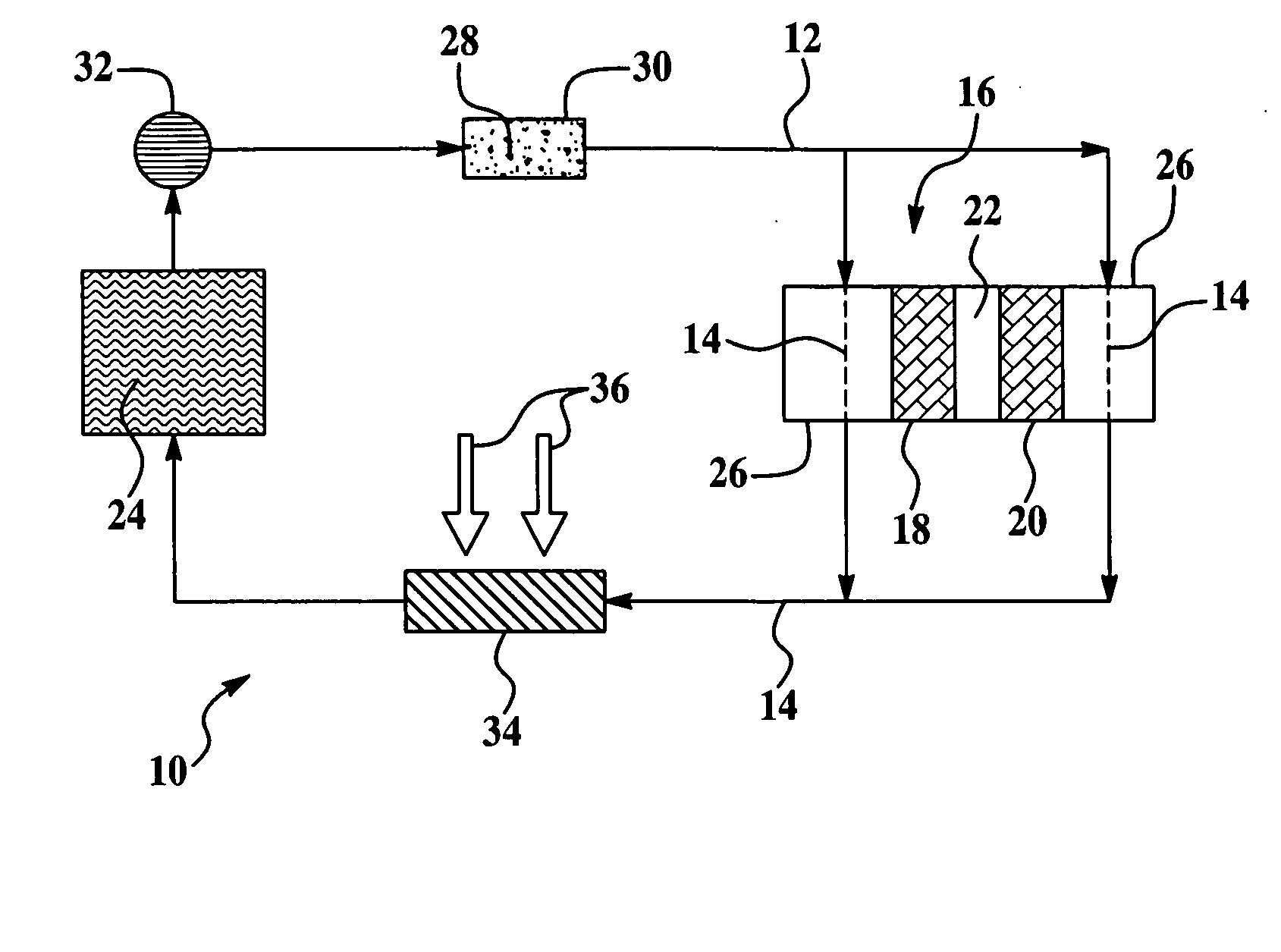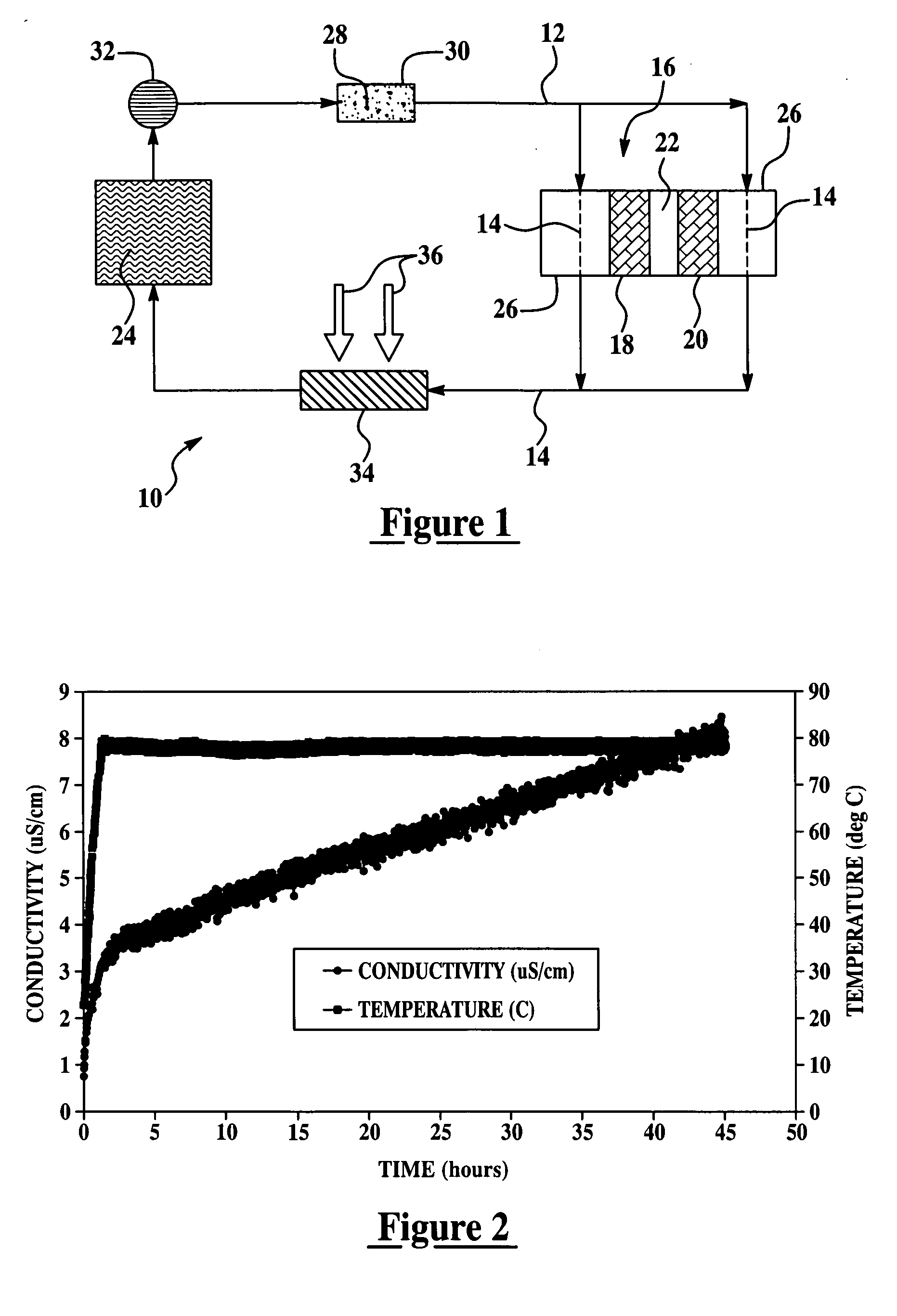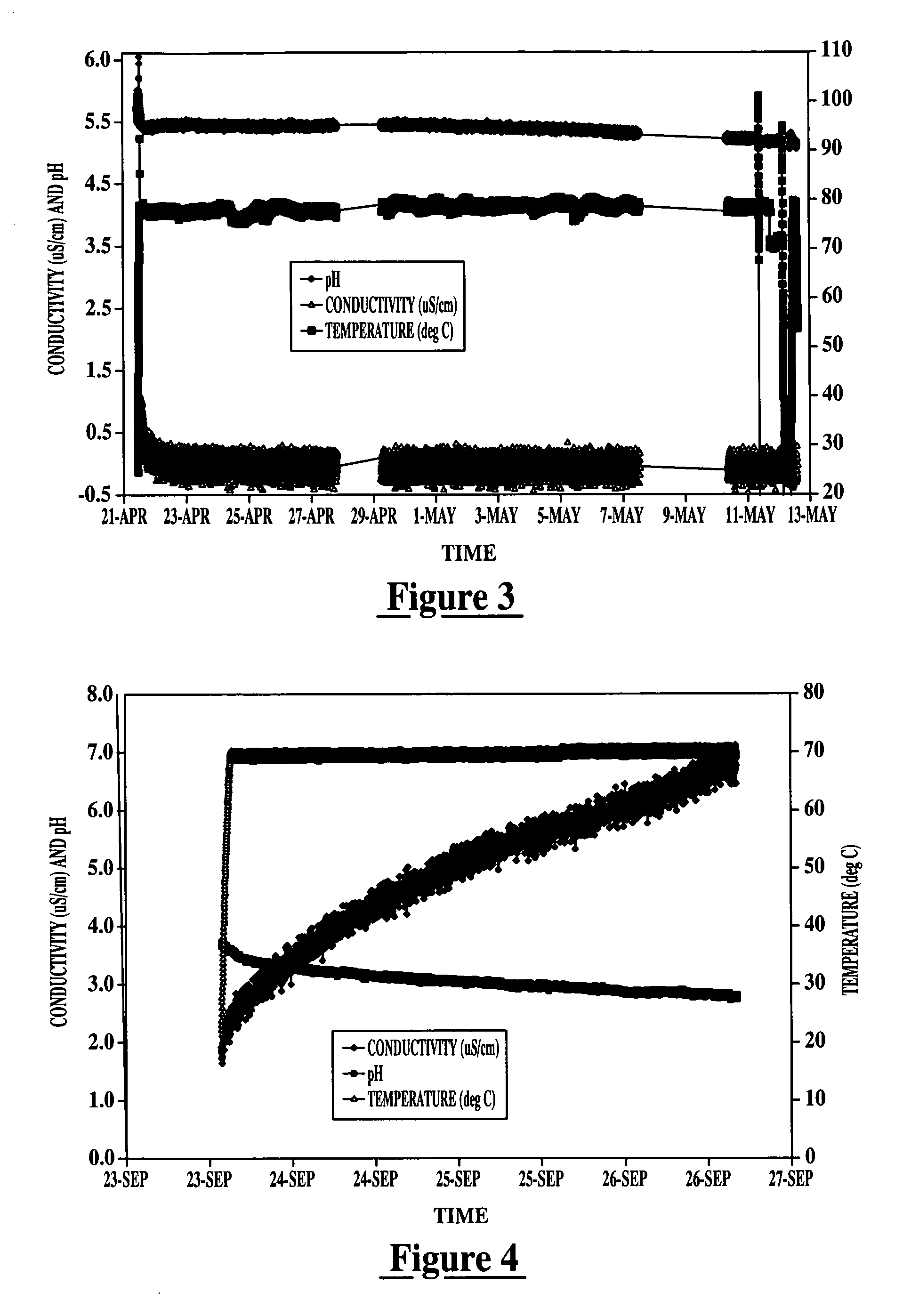Treated ion exchange resins, method of making, assemblies and heat transfer systems containing the same, and method of use
a technology of ion exchange resin and heat exchange fluid, which is applied in the field of pretreatment ion exchange resin, can solve the problems of unsuitable (or not optimized) prior art cooling system and heat exchange fluid use with alternative power sources, increased corrosion and/or short-circuiting of electrical current, and electrical shock
- Summary
- Abstract
- Description
- Claims
- Application Information
AI Technical Summary
Benefits of technology
Problems solved by technology
Method used
Image
Examples
example 1
[0142] The effect of mixed bed ion exchange resins upon conductivity in a fuel cell system was evaluated. The tests were conducted in a simulated fuel cell stack with a heat transfer system. The test unit contains a simulated fuel cell stack with alternating silicone gasket and stainless steel plate stack one above another to simulate a fuel cell stack. The stack simulated 50 cells connected in series. During the tests, 50 to 60 volts DC were applied across the simulated stack. The test unit also contains a heat transfer fluid tank, coupon holders, flow and pressure meters, an electrical heater, a pump, pH, temperature and conductivity sensors, etc. to simulate a fuel cell heat transfer system. The outputs from the sensors were recorded by a computer controlled data acquisition system. The data resulting from the tests is shown in the following FIGS. 2, 3, 4, and 5. It can be seen that mixed bed ion exchange resins are required for maintaining a fuel cell heat transfer fluid conduct...
example 2
[0143] Tests were conducted to evaluate whether benzotriazole (i.e., BZT) was removed by mixed bed ion exchange resin during prolonged contact. 10 grams of a Dow mixed bed resin were added into three glass beakers each containing 1000 ml, 500 ml and 250 ml BZT containing 50% ethylene glycol solution. The BZT concentration was determined to be 1284 ppm. The solutions were agitated via a Teflon-coated magnetic stirring bar. The conductivity and the BZT concentrations were measured before and after 22 hours exposure with the resin. The results are shown in the Table 1 below. One can see that BZT is removed by mixed bed resin from the solution. Conductivity of the solutions was also reduced after the treatment with the ion exchange resin.
TABLE 1BZTConductivityTempSolution ID(ppm)(μS / cm)(C.)1200 ppm BZT Stock solution12820.7122.71000 ml 1200 ppm BZT +1420.2722.710 g Mixed bed resin for22 Hours500 ml 1200 ppm BZT +00.1022.710 g Mixed Bed Resin for22 hours250 ml 1200 ppm BZT +00.1022.710...
experiment 3
[0144] The effectiveness of the BZT treated mixed resins from Example 2 in reducing conductivity in fuel cell heat transfer fluids contaminated with ionic species (e.g., 30 ppm NaCl) was evaluated as set forth in Table 2. In addition, the corrosion inhibiting properties of a heat transfer fluid passing through the disclosed BZT treated mixed resins was evaluated with respect to the corrosion protection for Cartridge Brass (70% Cu-30% Zn). The heat transfer fluid was an aqueous solution of 50% vol EG+100 ppm Cl at 80° C. Note: BZT was exchanged in 100 ml 50% EG solution with 30 ppm NaCl.
TABLE 2Tefel Corr.LPR Rateppm BZT inEcorrRpTreatmentRate (mpy)(mpy)solution(V / AgAgCl)(kohm / cm{circumflex over ( )}2)Blank1.151.050−0.08022.6250 ml 1200 ppm BZT1.06N.D.Not detectable−0.080500 ml 1200 ppm BZT0.240.52Trace−0.08332.31000 ml 1200 ppm BZT0.040.03102−0.011400.0
[0145] The results shown in the FIGS. 6 and 7 and Table 2 demonstrate the following: 1. The BZT treated mixed bed resins are still ...
PUM
| Property | Measurement | Unit |
|---|---|---|
| Temperature | aaaaa | aaaaa |
| Fraction | aaaaa | aaaaa |
| Fraction | aaaaa | aaaaa |
Abstract
Description
Claims
Application Information
 Login to View More
Login to View More - R&D
- Intellectual Property
- Life Sciences
- Materials
- Tech Scout
- Unparalleled Data Quality
- Higher Quality Content
- 60% Fewer Hallucinations
Browse by: Latest US Patents, China's latest patents, Technical Efficacy Thesaurus, Application Domain, Technology Topic, Popular Technical Reports.
© 2025 PatSnap. All rights reserved.Legal|Privacy policy|Modern Slavery Act Transparency Statement|Sitemap|About US| Contact US: help@patsnap.com



